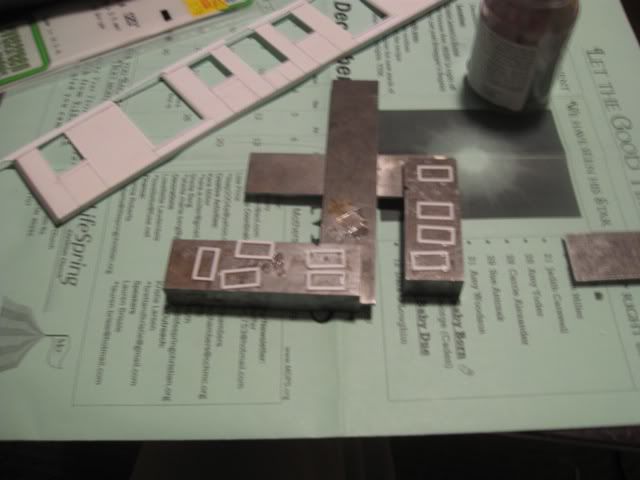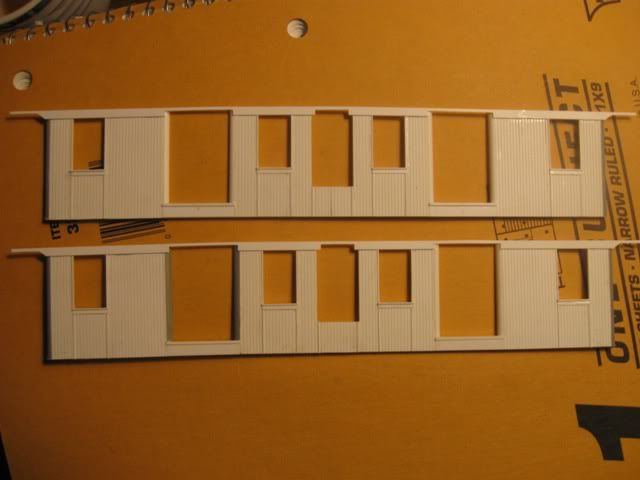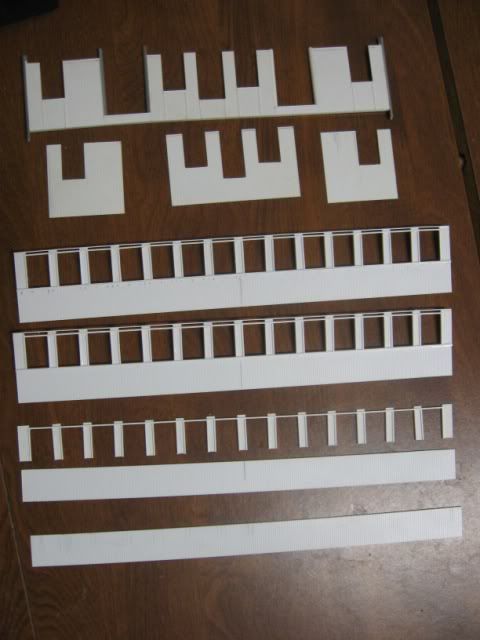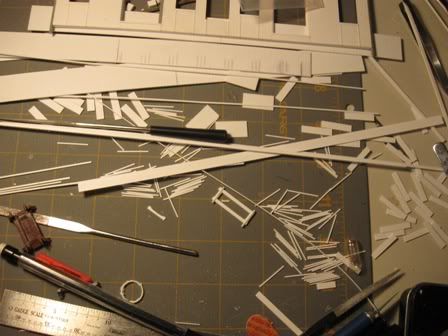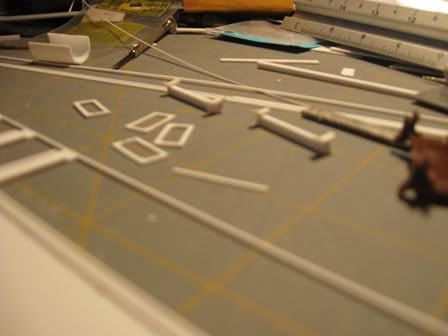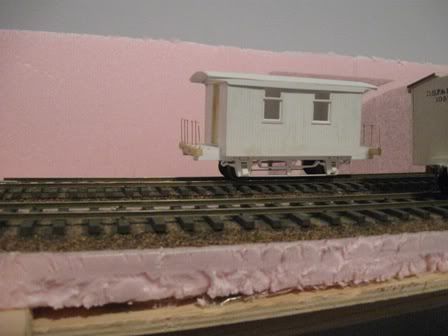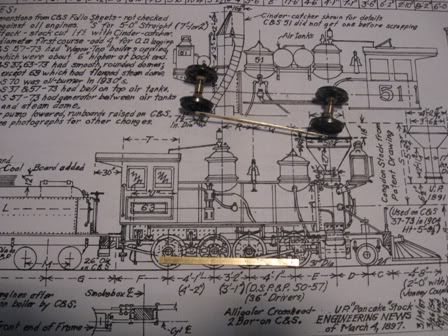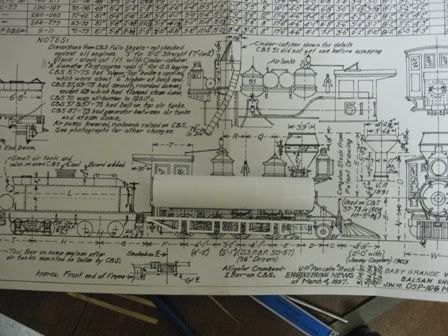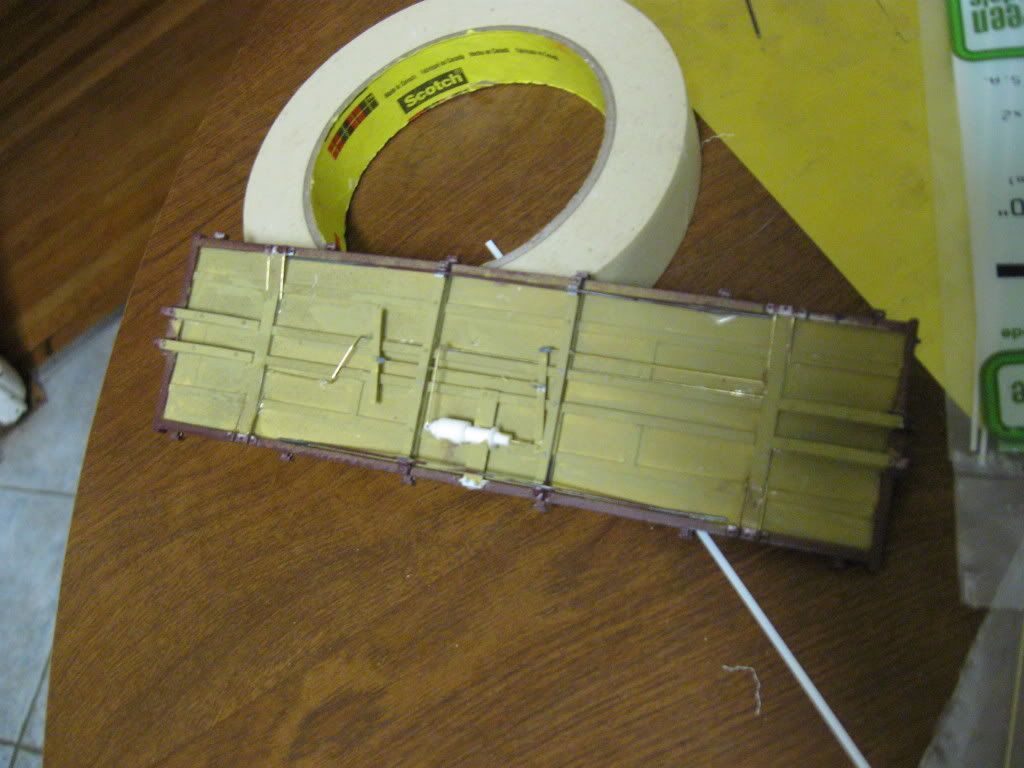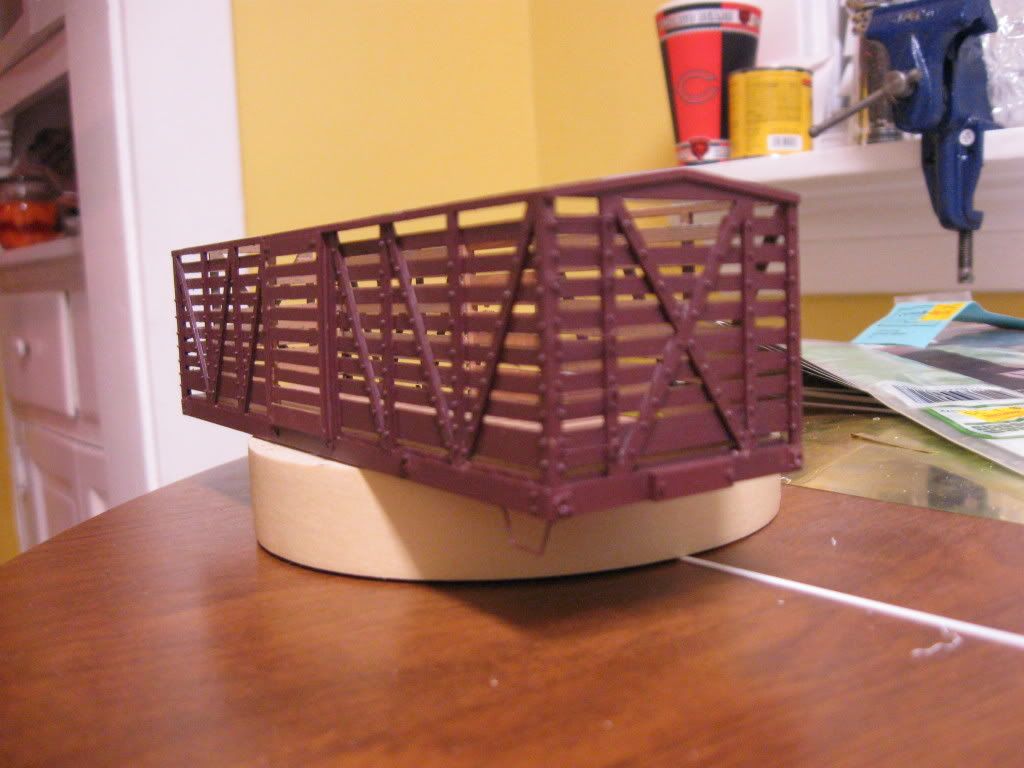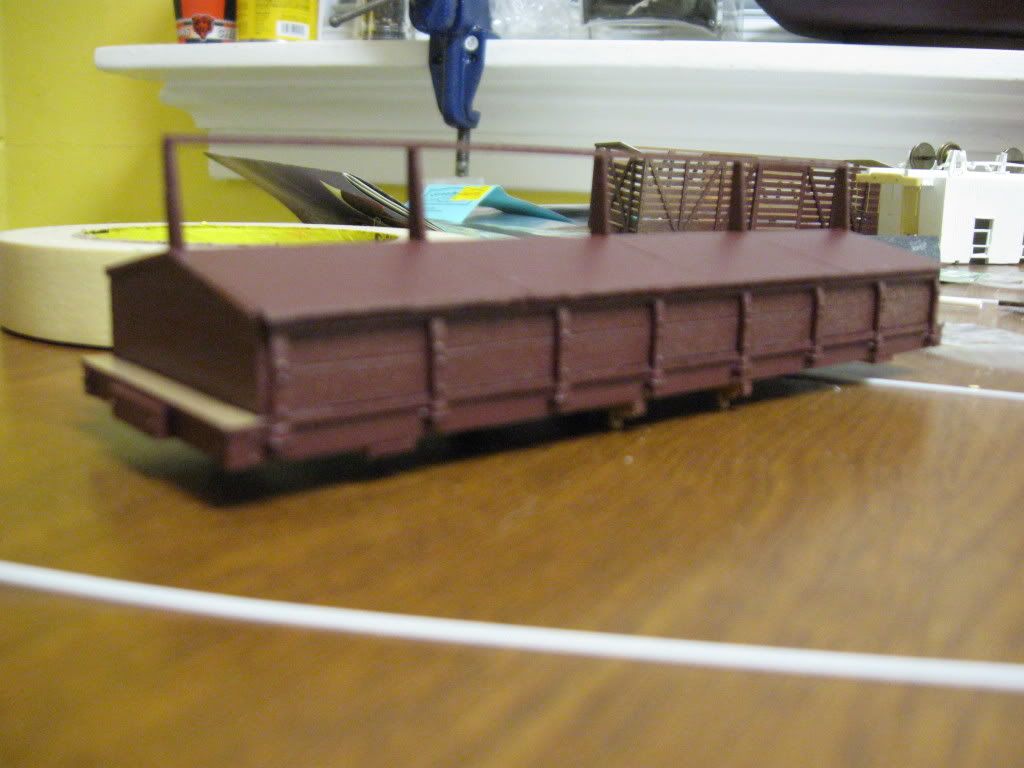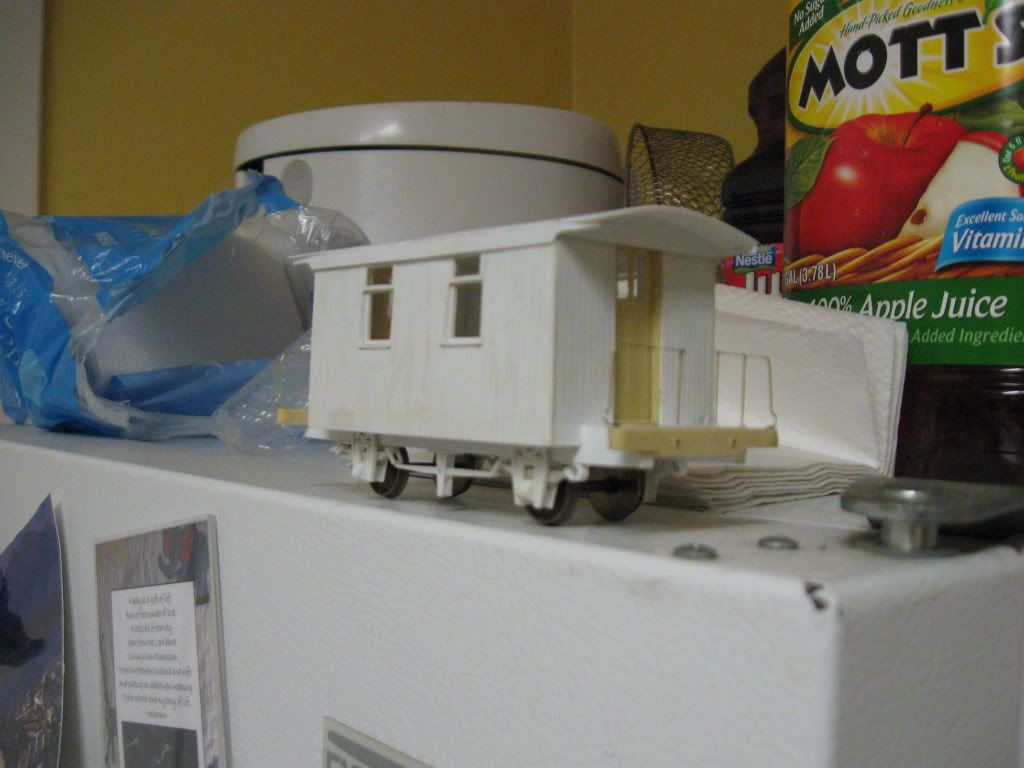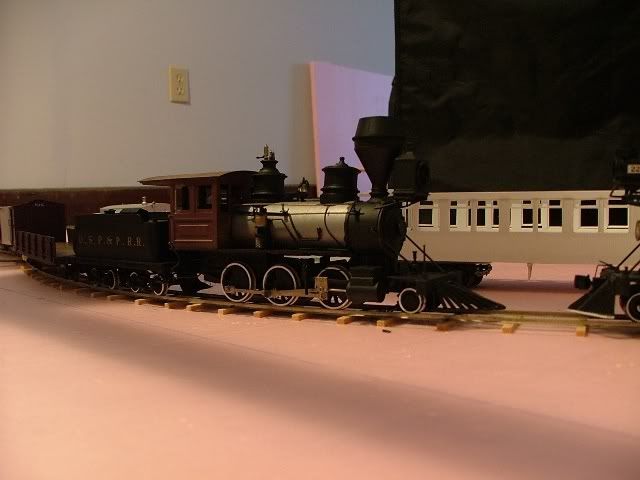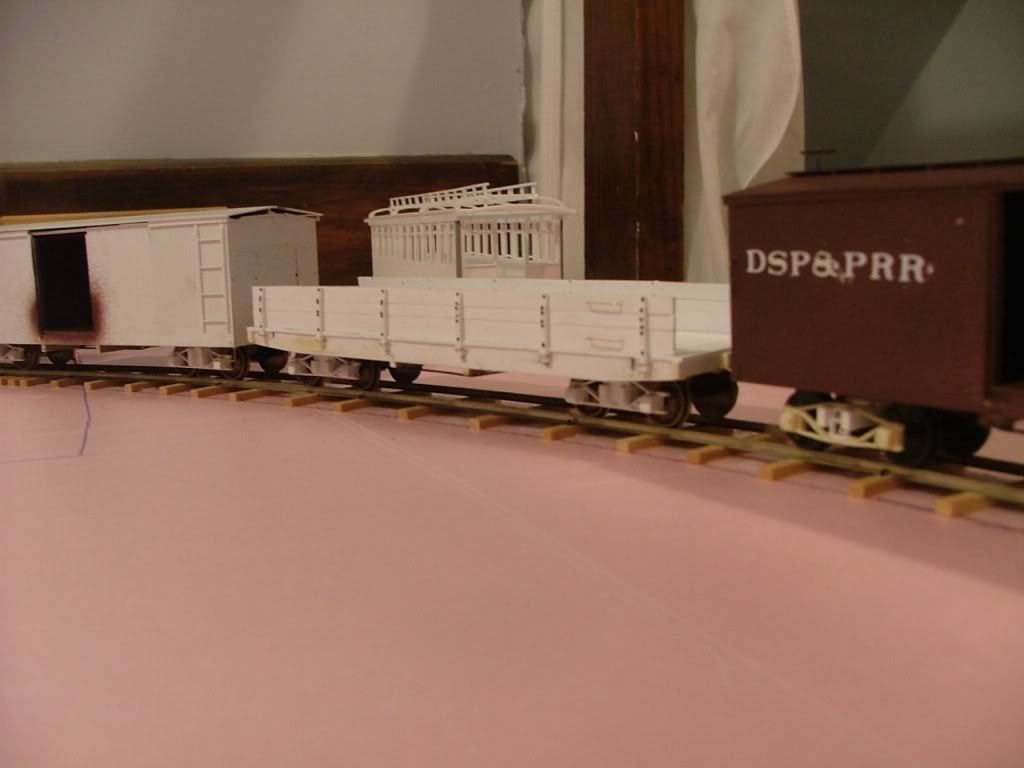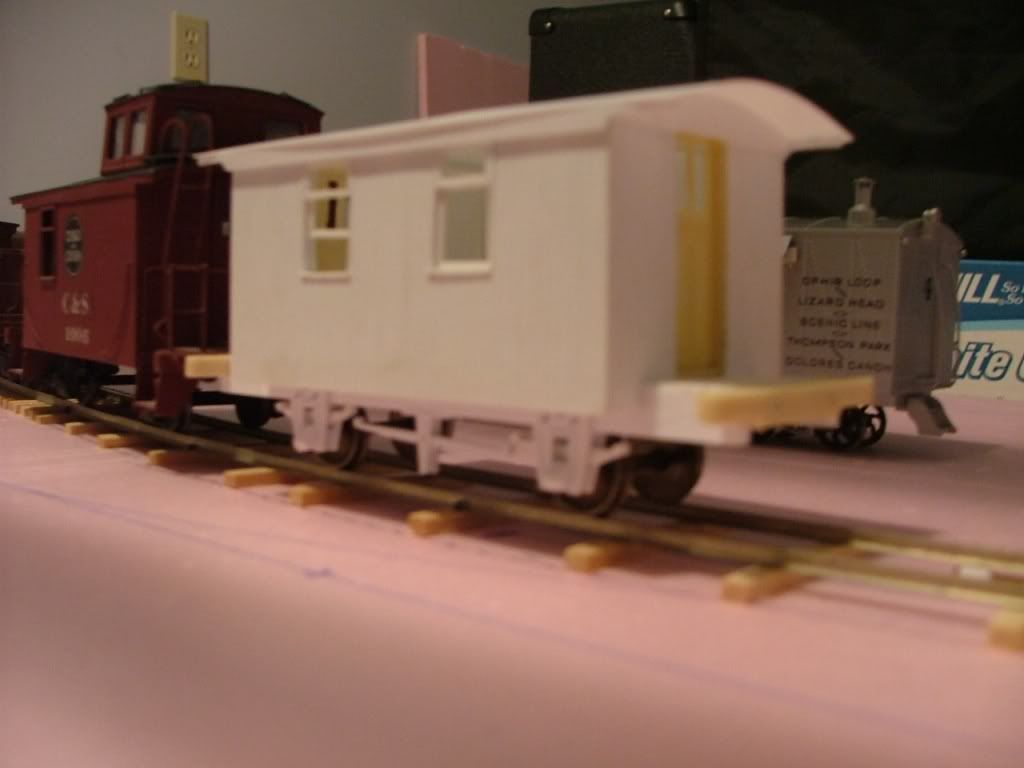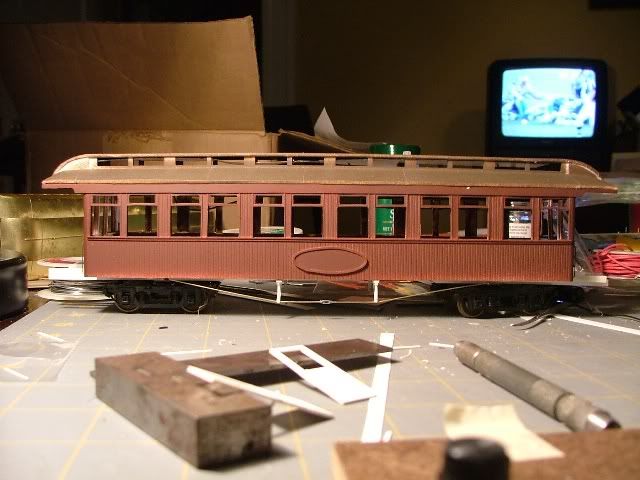I'm looking forward to taking a picture of the 128 window panes needed for the two coaches. Intriguingly...I can fabricate them fast than to duplicate them in resin.
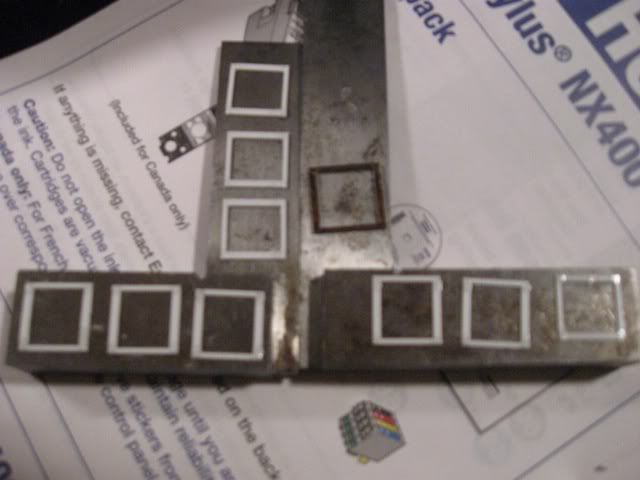 I built one extra pane...just in case I'm not happy with or destroy one of the others.
I built one extra pane...just in case I'm not happy with or destroy one of the others.The 10th pane is from the paycar. There is no optical illusion in this picture...it is noticeably large than the panes for #40. It is also of a different construction technique...11 pieces instead of 4, with an internal pocket for the glazing. I'm using a simpler technique this time to ease the installation of the glazing. I kind of like to get some super thin glass from Clover House, but I tend to think that it is too clear for 19th century glass...I feel that clear plastic is more accurate for the time period.
The photo that photobucket didn't like yesterday...

